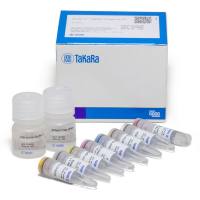Protein expression and purification have traditionally been time-consuming, case-specific endeavors, and are considered to be the greatest bottlenecks in most proteomics pipelines. Escherichia coli (E. coli ) is the most convenient and cost-effective host, although optimal conditions for the expression of different proteins vary widely. Proteins vary in their structural stability, solubility, and toxicity in this environment, resulting in differing rates of protein degradation, formation into insoluble inclusion bodies, and cell death, thus affecting the amount of soluble protein that can be obtained from E. coli grown in culture. To take full advantage of a variety of strategies developed to improve the expression of soluble protein in E. coli , an easy, rapid means to test many growth parameters is necessary. This chapter describes a dot-blot expression screen to test the effects of growth and induction parameters on the yield of soluble protein. The expression screen is used to detect hexahistidine-tagged proteins expressed in E. coli ; however, it is adaptable for the detection of other affinity tags or fusion partners that have suitable antibodies available. In this example, induction time and temperature are tested; however, it can be used to test additional parameters, such as affinity tag type and placement, E. coli host type, and growth medium formulations.






